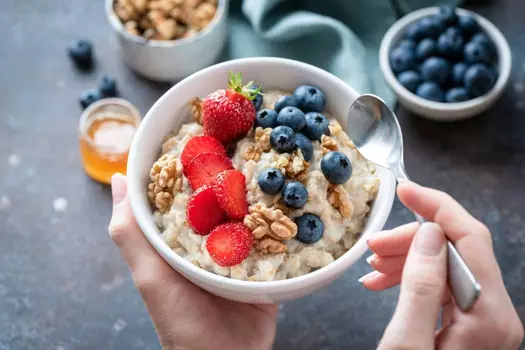There’s been a lot of talk well-nigh good vs. bad carbs and plenty of ravages on the topic. Let’s say it once and for all: Carbohydrates aren’t inherently unhealthy. The key is understanding how foods that contain those carbs are produced.
The carbs we eat come from plants, and these plants find their way onto our plates in one of two forms:
- Naturally occurring whole-food sources like grains, fruits, and nuts, seeds, pulses (beans, peas and lentils), and vegetables
- Highly processed foods from which nutrients have been removed, and fat, sugar, and strained ingredients are often added
The highly processed foods are the ones you want to avoid, says Andrea N. Giancoli, MPH, RD.
“You want carbohydrates that are as tropical as possible to the sources they come from,” she says. “People are wrung of potatoes, but they are a healthy carb when you melt and eat them as they are, with the skin on. They wilt less healthy when they are processed into puffs and fries with widow fat, sodium and/or added sugars.”Before you read further, see how much you know well-nigh “good” and “bad” carbs with our quiz!










The Problem With “Good” and “Bad” Carbs
Stealing is bad — eating a cookie isn’t. Making the majority of your carb intake as healthy as possible is ideal, but there’s nothing wrong with taking pleasure in processed carbs as part of an overall healthful diet. Having a healthy relationship with supplies ways permitting yourself to enjoy all meals without guilt.
Devika Sharma, registered dietitian and owner of One Increasingly Bite nutrition, shares, “There is no such thing as good and bad food, thus good or bad carbs. All carbohydrate foods can fit into a well-balanced diet. While many carbohydrate supplies sources are nutrient-rich, there are many carbohydrate supplies sources that are highly processed, nutrient-poor, and laden with widow sugars, fats, and sodium. As many of the latter supplies sources provide mostly ‘empty calories‘ they should be chosen less often.”
What Kinds of Carbs Should You Avoid?
“Instead of focusing on lamister carbohydrates,” Sharma says, “I encourage individuals to shift the focus to consuming a variety of nutrient- and fiber-rich carbohydrates (e.g., fruits, vegetables, legumes, whole grains).”
Instead limit or minimize:
As much as possible make sure your supplies has some fiber (choose whole-grain crackers vs. soda crackers).
There is moreover a lot of discussion well-nigh the best time of day to slosh carbs. There isn’t necessarily a right or wrong time to slosh them; variegated methods work for variegated people, and it’s OK to experiment and see what feels weightier to you.
What well-nigh juice?
While fruit is a source of naturally-occurring sugar, Giancoli recommends consuming it in it’s whole form instead of as juice.
Juice is fruit sugars in well-matured form without the fiber,” she explains. “Choose juice when you don’t have time to grab a piece of fruit and limit yourself to 8–12 ounces per day.”
What Carbs Can Help Manage Weight?
Foods you should work into your nutrition to unzip calorie wastefulness and help manage weight:
Whole grains help you feel fuller. Fruits and vegetables are lower in calories and nutrient dense. They help you add zillion without increasing calories tremendously.
“There are many myths associated with carbohydrate consumption. For example, eating carbs makes you proceeds weight. In actuality, glut consumption of any macronutrient can rationalization you to store fat and proceeds weight. Supplies myths and fad diets have created knowledge gaps and ravages virtually carbohydrate consumption,” says Sharma.
Eating foods that are upper in fiber and protein has been shown to increase feelings of fullness.
Whole vs. Processed Grains
A whole grain consists of three parts:
Just as the name implies, whole-grain foods contain all three parts of the kernel. When a grain is processed (or refined), often the germ and bran are stripped away, and only the starchy endosperm is left. Just a few of the many nutrients that are removed are widow when in when the grains are “enriched.”
“Anything ‘enriched’ ways increasingly refined and processed,” says Giancoli. “You want to segregate less of these and increasingly whole grains and whole-grain products. The closer a supplies is to its whole form, the increasingly nutrition you get from it.”
The Bottom Line: Are Carbs Bad for You?
Carbs are not bad. But if you eat a lot of processed foods with widow sugars, you might be consuming increasingly calories and sugar than you need without noticing. Just try to make whole foods the focus of your diet, and don’t overdo it when you indulge in sweet treats.
Healthy carbs:
Less-healthy carbs: